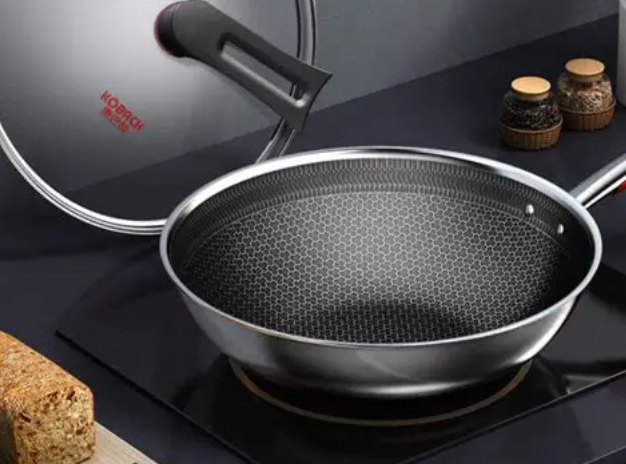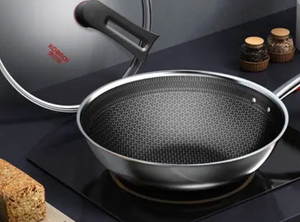
Inspection standards for non-stick pans Inspection and factory audit services
As a necessary cooking utensil in modern kitchens, the quality of non-stick pans directly affects the cooking experience and safety during use. To ensure that non-stick pan products meet industry standards and quality certification requirements, a professional inspection process and strict inspection standards are of vital importance. This article will systematically introduce the seven inspection modules of non-stick pans during the inspection and factory verification process, providing a complete quality control guide for enterprises.
I. Product Overview and Classification Certification
The core material of the non-stick coating is polytetrafluoroethylene (Teflon), which possesses properties such as high-temperature resistance, self-lubrication, and chemical stability. According to the inspection and certification standards, non-stick pans can be classified as:
By function classification: cooking pot, frying pan, sauté pan, milk pot
According to the coating system:
Layer system: Single coating non-stick layer
Two-layer system: Bottom layer + surface layer composite structure
Three-layer system: Bottom layer + Middle layer + Surface layer reinforcement structure
According to surface treatment: non-stick coating, enamel, high-temperature resistant paint, polishing treatment
II. On-site inspection of seven certification modules
1. Appearance quality inspection certification
The non-stick coating surface is smooth and flat, with uniform color, coverage, and glossiness.
No obvious defects such as bubbles, detachment, dirt, cracks or burst points.
The coating is completely thermally fused, with no local areas that remain uncurdled.
Complies with the basic requirements for appearance quality as stipulated in the factory inspection certification.
2. Handle Load Strength Test Certification
Calculation Formula Standard:
Double-handle pot: W = 1/2W₁ + 3/2W₂
Single-handle pot: W = W₁ + 3W₂
Certification Requirements:
After the load test, the handle bracket showed no loosening or deformation.
The handle has no cracks and its structural integrity is good.
Complies with the structural safety test standards stipulated in the inspection process.
(Note: W = load force, W₁ = weight of the specimen itself, W₂ = maximum water-bearing weight of the specimen)
3. Inspection and Certification of Matrix Material Thickness
Minimum Thickness Standard:
Pan: ≥ 2.0mm
Wok: ≥ 2.5mm
Stove pot: ≥ 1.6mm
Milk pot: ≥ 1.8mm
Certification significance:
Ensure that the usage intensity of the product meets the requirements.
Provide effective base material protection for the non-stick coating
Complies with the basic requirements for material specifications set by the factory inspection certification.
4. Detection and Certification of Non-stick Coating Thickness
Average thickness standard:
Frying pan, sauté pan: ≥ 25 μm
Stove pot, milk pot: ≥ 20 μm
Importance of Certification:
Directly affecting the service life of the non-stick pan
Relating to the durability of the non-stick property
This is a key indicator that must be strictly controlled during the inspection process.
5. Adhesion Strength and Abrasion Resistance Certification
Test Procedure Standard:
Boil the water for 15 minutes and then let it cool naturally.
Carry out the grid spacing test with a dedicated blade at a 2.4mm interval
Carry out the 90° right-angle pulling test using pressure-sensitive adhesive tape
Rotate 90 degrees and repeat the testing process
Certification standards:
There is no phenomenon of the coating peeling off in complete sections within the marked area.
The tests were all in compliance with the requirements for three consecutive times.
Ensure that the coating does not come off during use.
6. Non-stick performance inspection and certification Testing method:
Wipe the surface of the coating with vegetable oil
Wash with warm water and detergent, then dry.
Carry out a standard frying test
Certification Requirements:
The food does not stick together and is easy to clean.
The coating surface remains intact and undamaged.
Meets the core functional verification standards of non-stick pans
7. Supplementary testing items
Temperature tolerance test: Verifying the stability of the coating under high temperatures
Chemical stability test: Ensuring safety of contact with food
Abrasion resistance test: Evaluating the service life of the coating
Environmental protection certification: Confirm compliance with food contact material standards
III. Inspection and Certification Process and Execution Standards
1. Sampling Inspection Standards
Random sampling is conducted in accordance with the AQL standard.
Key projects will undergo full inspection or the sampling ratio will be increased.
Establish a complete inspection record system
2. Defect Level Determination
Serious Defect: Any item that affects the safety of use will not be tolerated.
Main defect: Strict control over items that affect the functionality of the product.
Secondary defect: Appearance defects are controlled within the standard acceptance range.
3. Certification Requirements
Provide food safety certification for coating raw materials
Issue a material conformity test report
Provide the production process flow records
Establish a quality traceability system document
IV. Key Points for Factory Audit
To ensure that the non-stick cookware products consistently meet the quality certification requirements, during the factory audit process, the following aspects should be given special attention:
Raw material control: Establishing inspection standards for coating raw materials and aluminum materials during the purchase process
Production process control: Develop operation guidelines for key procedures such as spraying and curing.
Equipment maintenance and calibration: Regularly calibrate thickness measuring instruments and testing equipment
Environmental control: Ensure that the cleanliness level of the spraying workshop meets the requirements.
Personnel training: Enhance the professional skills of quality inspection personnel and unify the inspection standards
Inspection and Certification Summary
The inspection and factory verification of non-stick cookware is a systematic project that requires comprehensive testing from the base material thickness, coating quality to performance. Enterprises should establish a complete quality management system and strictly implement inspection standards at each production stage to ensure that the products pass industry certification.
分享这个商品

Inspection standards for non-stick pans Inspection and factory audit s
As a necessary cooking utensil in modern kitchens, the quality of non-stick pans directly affects the cooking experience and safety during use.
